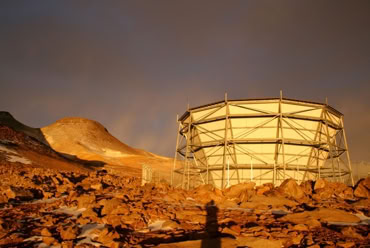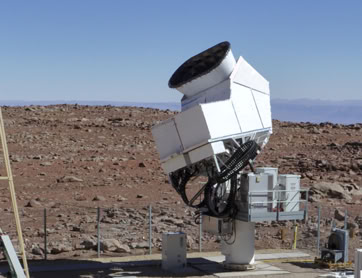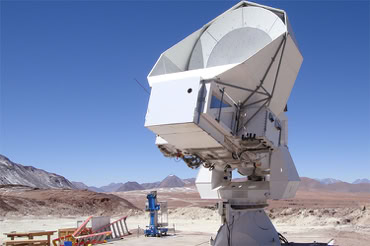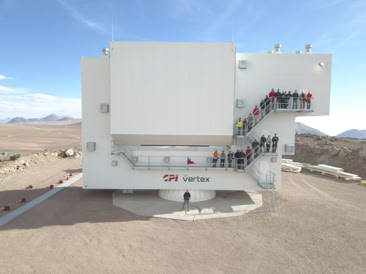Collaborations
The CMB group at PUC actively collaborates with some of the most important cosmological experiments installed in Chile. This opens world class research opportunities for students and postdocs who would like to contribute to this exciting science, providing them with access to datasets, instruments, internships at international universities and laboratories, possibility to spend time at the telescope sites and contributing to major discoveries.
Our group participates in the following experiments:
Atacama Cosmology Telescope (ACT):
Operating since 2017, ACT is the oldest CMB telescope installed in Chile, and also the largest, with its 6 meter diameter primary mirror. Lead by Princeton University (PI: Suzanne Staggs), ACT joins the efforts of nearly 30 institutions. Our group has been an active collaborator since 2005, when Prof. Dünner joined the project as a graduate student. Our participation concentrates in the areas of data reduction, optical alignment, optical characterization and modeling, map making and extragalactic source follow up.

Cosmology Large Angular Scale Surveyor (CLASS):
Lead by Johns Hopkins University (PI: Charles Bennett), CLASS began observations in 2016, searching for the tiny primordial B-mode polarization signal at large angular scales using its novel polarization modulation technique called VPM. Our group has been an active collaborator since its early stages, contributing with several aspects of the instrumentation, data processing and characterization of systematics.

POLARBEAR and Simons Array (SA):
POLARBEAR is an experiment led by University of California, Berkeley, to detect B-mode polarization signal at intermediate angular scales. It has been observing from Chile since 2013. In 2016, two new equivalente telescopes where installed to form the Simons Array, which got first light in late 2018. These telescopes use novel detector and readout technology to significantly increase the number of detectors available at a time. Our group has provided the optical alignment for these telescopes, as well as instrumental work required for its installation and operation.

In 2017, the Simons Foundation provided the seed funding to establish the Simons Observatory, merging the efforts of the ACT and POLARBEAR collaborations. The project includes three small-aperture telescopes (SATs) to measure large angular scales and one 6-meter large-aperture telescope (LAT), all installed on Cerro Toco, near the ACT and POLARBEAR sites. The observatory involves a large international collaboration across the Americas, Europe, and Japan, with our group contributing to both hardware and software development. The SATs began observations in 2023 and the LAT in late 2024, so the first CMB maps are already being produced, though not yet published.

Lead by Cornell University, CCAT-prime will be installed at 5600 m on the summit of Cerro Chajnantor, becoming the highest CMB telescope on Earth. This will provide it with the best atmospheric conditions due to the low water vapor, extending its band capabilities into the THz. The telescope will be a twin version of the SO LAT telestope It will initially host two cameras, a CMB mapping receiver with thousands of detectors in multiple bands, and a 800 GHz heterodyne receiver for galactic studies. Our group has been collaborating with this project, developing an holography alignment system to achieve exquisite mirror surface quality, and developing electromagnetic simulations to understand other systematic effects.
